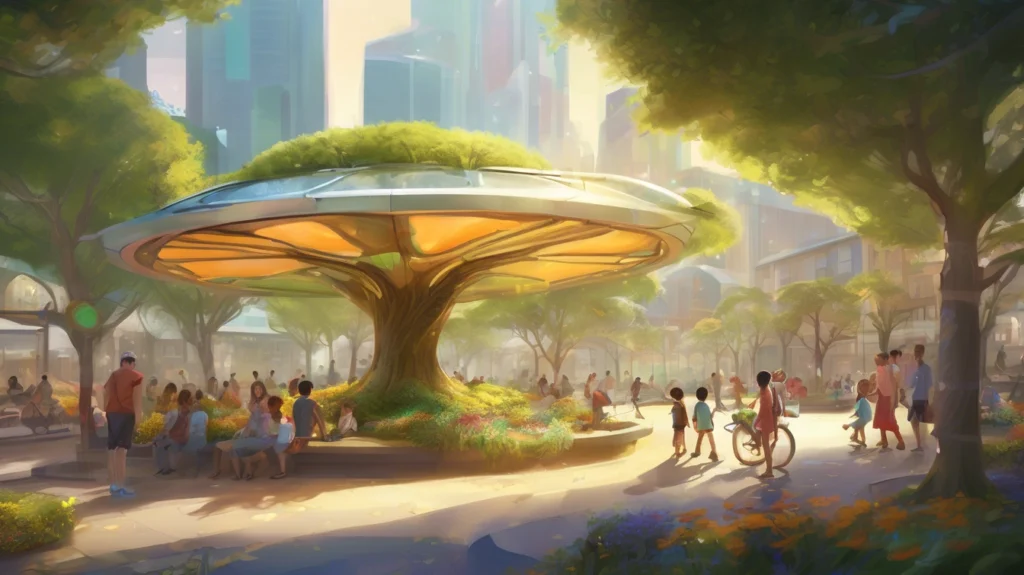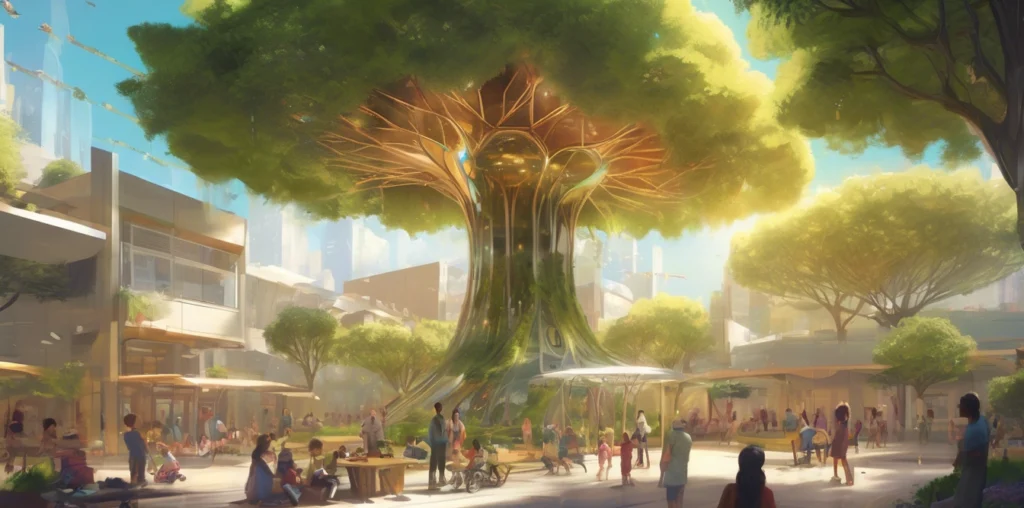Once upon a very near future, every neighborhood came with a local miracle: the Community Climate Canopy. Picture a glowing, tree-like structure stretching above parks, playgrounds, and rooftop gardens, humming softly as it cleaned the air, collected solar energy, and whispered rainfall to thirsty plants below.
These canopies didn’t just cool down overheated city blocks (though they did that spectacularly). They were the social heartbeat of the neighborhood. Parents lounged on solar-warmed benches while their kids darted between sun-dappled flower beds. The local AI forecasted not just the weather but the mood, cueing up chill jazz for quiet mornings and playful tunes when the kids’ laughter reached peak volume.
Even better? The canopies adapted. In high-pollution zones, they focused on filtration. During heatwaves, they deployed cooling mists and shade sails. During droughts, they captured and recycled water with remarkable efficiency. What used to require huge municipal budgets now grew like organic tech extensions of the people’s will.
Every neighborhood had its own unique canopy personality. In some places, the canopies featured hanging gardens of local herbs. In others, they hosted projection domes that displayed children’s art or educational nature shows during family hours.

It was clean energy, community bonding, and climate action wrapped in one big leafy embrace. What once took government grants and red tape now sprouted like dandelions—easy, beautiful, and utterly hopeful.
In a world that once let corporate greed override environmental sense, these canopies proved that neighborhoods could nurture themselves—and each other—with a little help from brilliant design and brave imagination.

